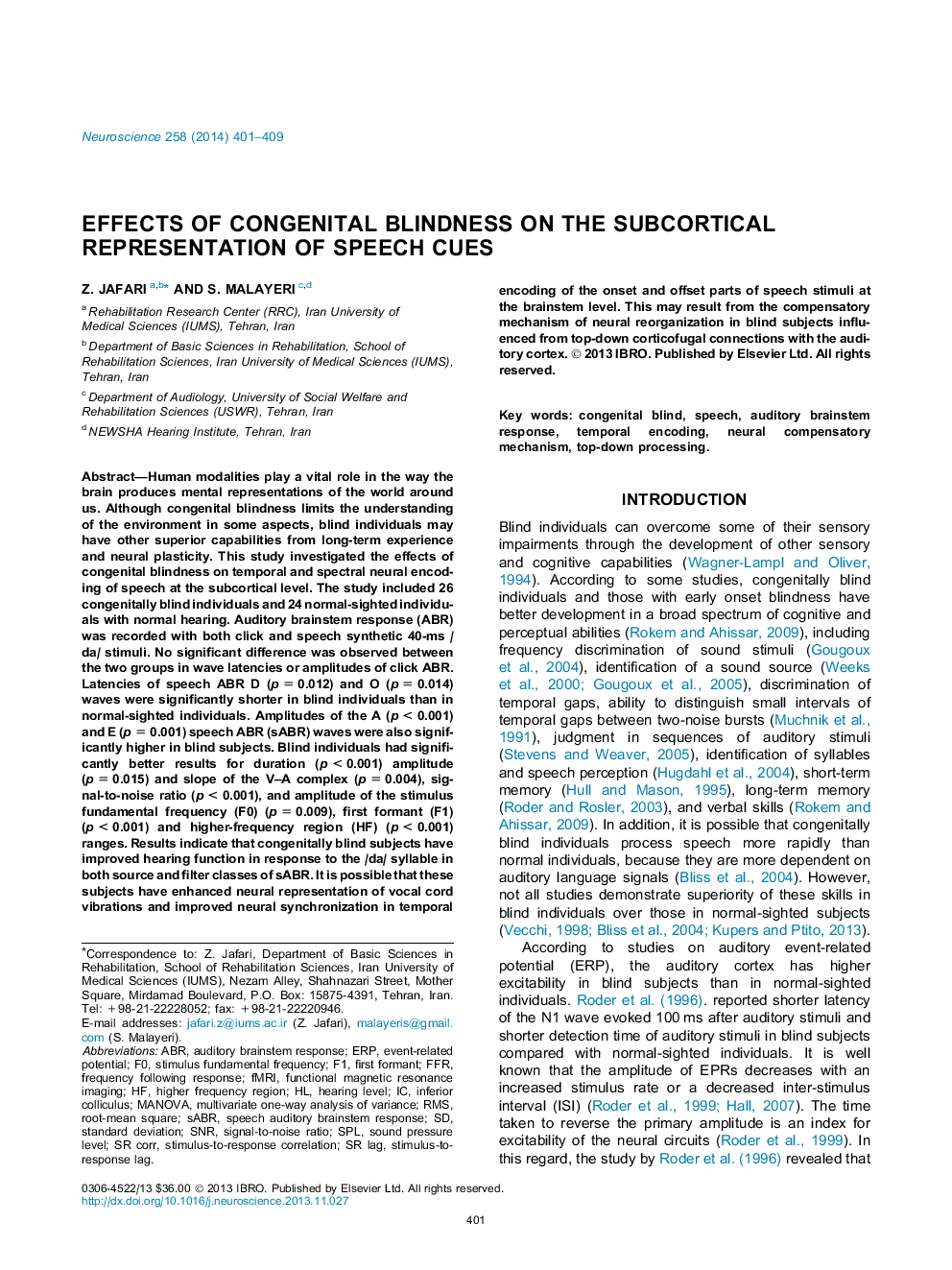| Article ID | Journal | Published Year | Pages | File Type |
|---|---|---|---|---|
| 4337782 | Neuroscience | 2014 | 9 Pages |
•Click stimulus does not have adequate complexity and sensitivity to show compensatory neural plasticity in the brainstem.•Congenitally blind subjects have better neural synchronization in the onset and offset of speech stimuli.•It is possible that congenitally blind subjects have enhanced neural representation of vocal cord vibrations.•Better SNR in the congenitally blind subjects may contribute to attentional enhancements reported previously.
Human modalities play a vital role in the way the brain produces mental representations of the world around us. Although congenital blindness limits the understanding of the environment in some aspects, blind individuals may have other superior capabilities from long-term experience and neural plasticity. This study investigated the effects of congenital blindness on temporal and spectral neural encoding of speech at the subcortical level. The study included 26 congenitally blind individuals and 24 normal-sighted individuals with normal hearing. Auditory brainstem response (ABR) was recorded with both click and speech synthetic 40-ms /da/ stimuli. No significant difference was observed between the two groups in wave latencies or amplitudes of click ABR. Latencies of speech ABR D (p = 0.012) and O (p = 0.014) waves were significantly shorter in blind individuals than in normal-sighted individuals. Amplitudes of the A (p < 0.001) and E (p = 0.001) speech ABR (sABR) waves were also significantly higher in blind subjects. Blind individuals had significantly better results for duration (p < 0.001) amplitude (p = 0.015) and slope of the V–A complex (p = 0.004), signal-to-noise ratio (p < 0.001), and amplitude of the stimulus fundamental frequency (F0) (p = 0.009), first formant (F1) (p < 0.001) and higher-frequency region (HF) (p < 0.001) ranges. Results indicate that congenitally blind subjects have improved hearing function in response to the /da/ syllable in both source and filter classes of sABR. It is possible that these subjects have enhanced neural representation of vocal cord vibrations and improved neural synchronization in temporal encoding of the onset and offset parts of speech stimuli at the brainstem level. This may result from the compensatory mechanism of neural reorganization in blind subjects influenced from top-down corticofugal connections with the auditory cortex.
